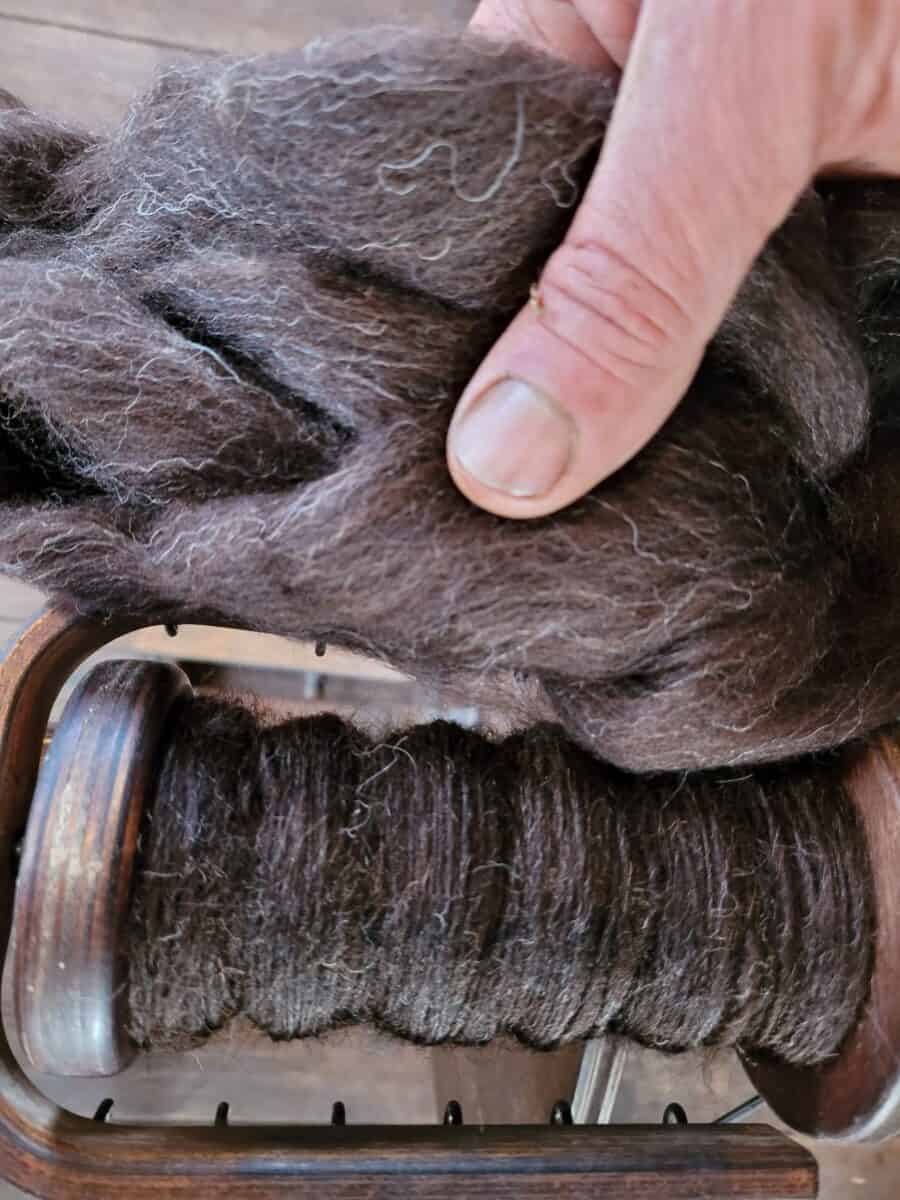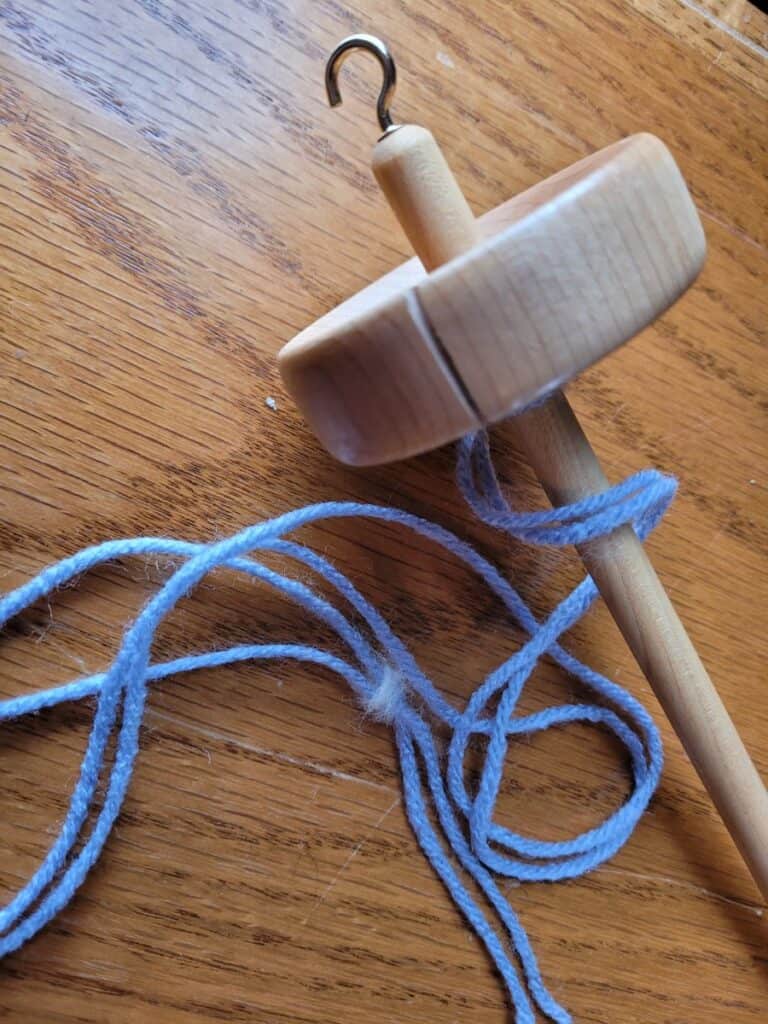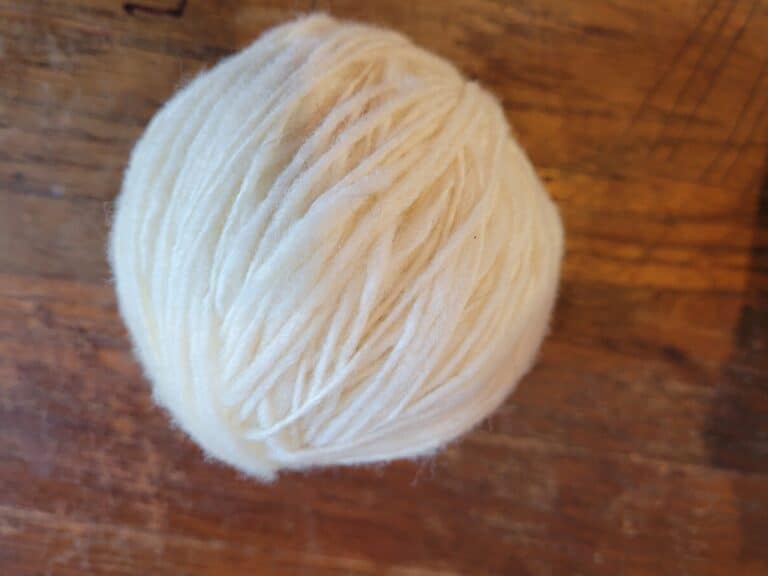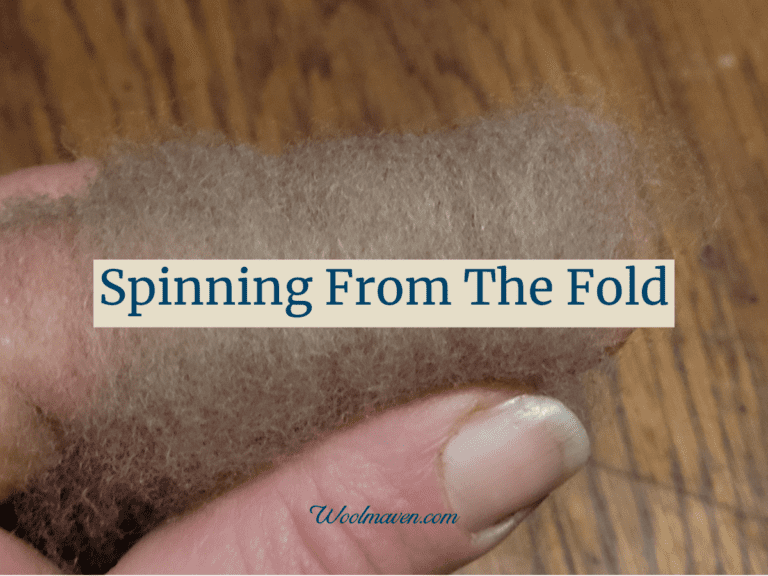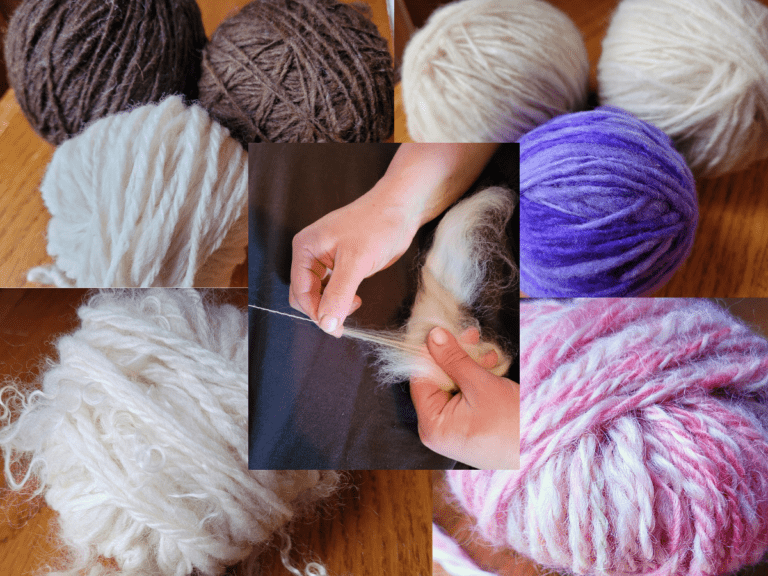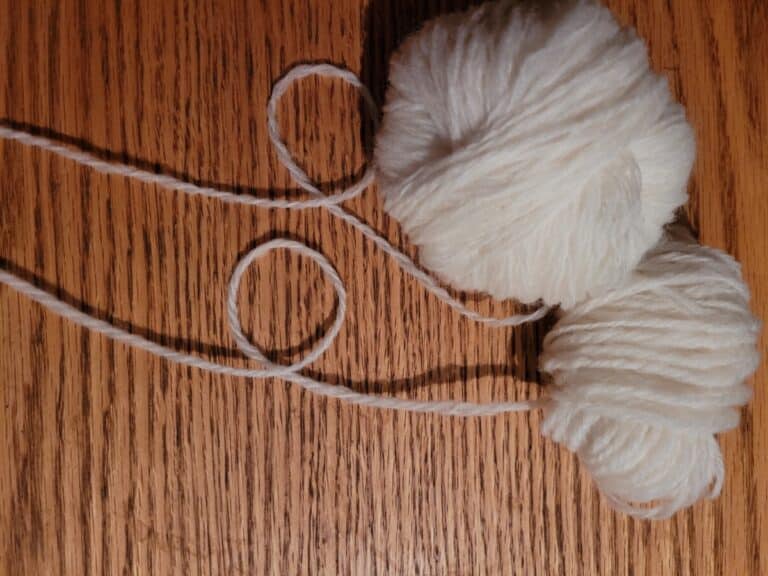Why Do You Need To Spin Wool?
You may be wondering, why spin wool to begin with? Do you really have to spin it or can you make things with wool that has not been spun?
Wool must be spun to make yarn for most knitting, crochet or weaving projects. Wool can be used unspun for felting and is occasionally used unspun in a few very specific knitting techniques, such as thrumming, and can be used unspun as the weft in a weaving project.
Is Spinning Your Own Yarn Worth It? goes over the costs involved in making vs buying wool yarn.
Wool is spun for yarn
Wool is spun to make it into yarn of various densities, diameters and lengths specific to the project that will be made from the yarn.
Wool starts out as a group of fibers that are anywhere from 1.5-12+ inches long that do not adhere together.
The individual wool fibers will pull apart until they are spun and set to keep them in the yarn.
The fibers pulling apart would be fine for using the wool as a stuffing, for something like pillows or mattresses, but if you want the wool to do something other than fill a space, it needs to be shaped.
If you want to shape the wool into anything specific, it needs to be locked together, by spinning or felting, so that it keeps the shape you intend it to have in the end project.
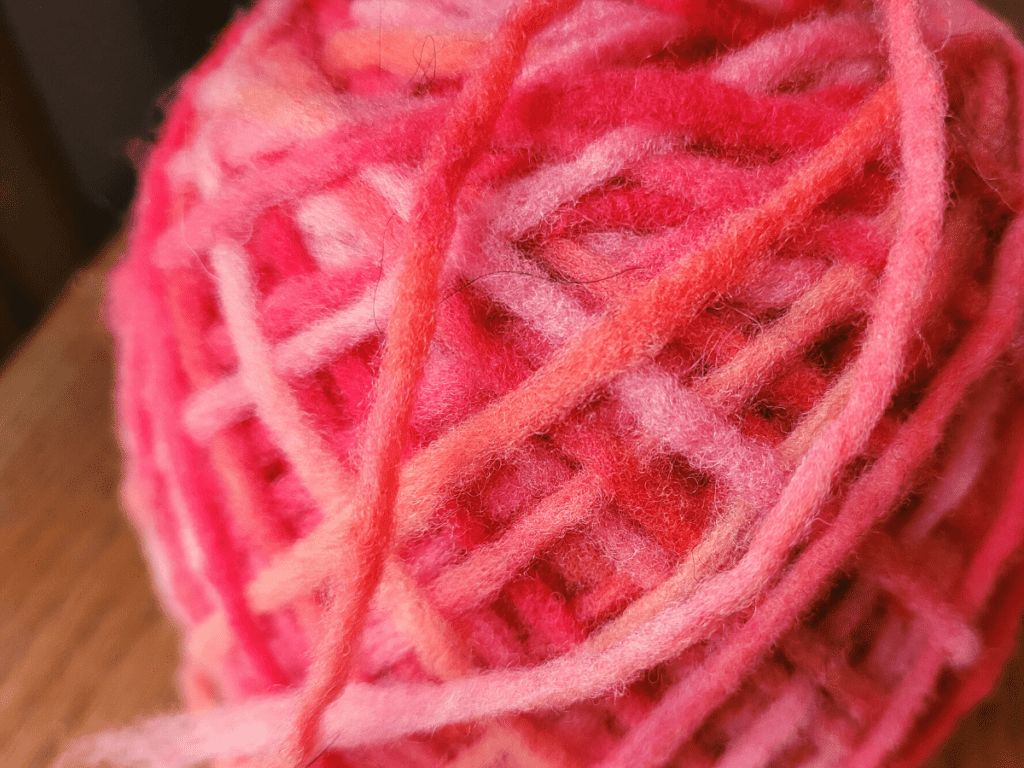
Let’s say you are working with a nice, medium wool, something with a 3-4 inch staple length, which is very normal for wool.
If you want to make anything longer that 3-4 inches, you have to have a way to make the fibers hold together. To get the fibers to hold together you can either spin or felt them or they will pull apart.
This is why you spin yarn, to get fibers that hold together when twisted into yarn, that would fall apart if stretched out that far in a line without the twist.
While you would get the wool fibers to hold together in felt, once felted you are stuck with the fiber alignment as is, you no longer have options as to what to make with your wool.
If you spin the wool into yarn, you have all manner of choices of what to make with that yarn, which is why for most folks who want to make a wool project choose to spin the wool, it gives them options.
Want to learn handspinning on a spinning wheel? Check out Woolmaven Handspinning, it’s a beginner course that has step by step, easy to understand lessons that you can take at your own pace on your schedule!
Spinning wool keeps the yarn together and strong
To keep the wool yarn together in the long strip of yarn it must be held by twist, this is what a wheel or spindle does, it adds twist to the wool to keep it in the long, skinny yarn shape.
When you put the wool through the spinning wheel, you are pulling the fibers out a little, called drafting, then adding twist, which keeps the fibers from unraveling.
Once the yarn is long enough, or you run out of space on the bobbin, you take the yarn off of the bobbin and set the twist by placing the yarn in a bath of hot water.
After the yarn is set it will not unravel and it is ready to be used for knitting, crochet or weaving.
Up until the yarn is set, it will unravel if left untethered, meaning you would have a long piece of thin wool fibers that would come apart as soon as you tried to make anything with them.
Setting the twist keeps the yarn in the diameter that you spun it and gives it strength, so that it will hold together when you make it into something else, like a hat or sweater.
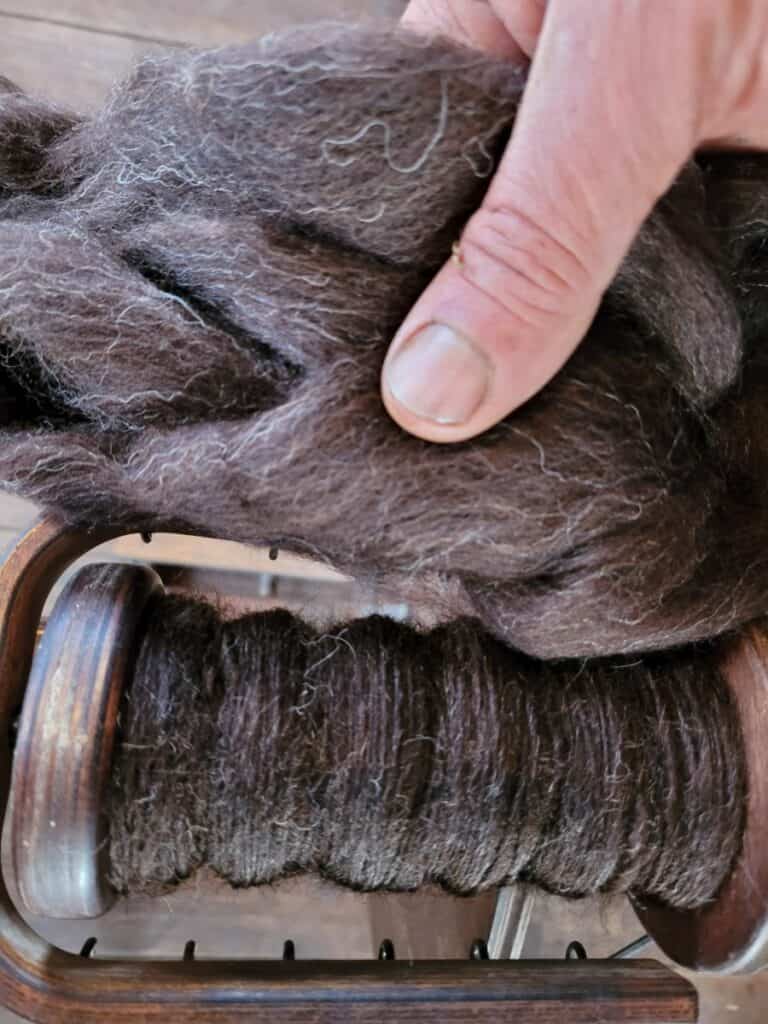
What happens if you don’t spin wool?
If you use unspun wool for your wool project, you will have a hard time keeping the shape of the stitches since the wool will pull apart each time you make another stitch.
The stitches will also have to contain a lot of wool to keep the length of wool you are working with continuous, which will make any project that you make out of unspun wool very bulky and heavy.
If you want a bulky and heavy end result, working with unspun wool may be the ticket!
For the near opposite of bulky, check out How To Spin Pencil Roving, this stuff is interesting!
One of the best parts about wool craft is that your creativity is really the only limit you have on what you can make. If you think up a great project to make with unspun wool, give it a shot and see what you get!
Of course, if you are using super big and bulky stitches, for instance if you decide to make a blanket out of just roving without spinning it first, you will end up making a very bulky project.
This bulky blanket will take a tremendous amount of wool roving to make.
Since this is your project, you can make what you want to with your roving, but know that you have to keep the roving intact for it to hold together, meaning if you stretch out the roving it will break.
I have to admit, I have made potholders out of unspun wool. This was an experiment to see if I could felt the wool so I just used barely drawn out wool to knit and made a bulky style potholder.
It worked well, actually and made a nice, fluffy, yet solid potholder and for anyone who is curious, this particular wool did not felt, too much Dorset I think.
I knew that this wool would be hard to felt, so I thought that if I used it unspun that would give me a better shot of encouraging it to felt, otherwise I would have spun it like I normally do.
The catch here is that if I were making a hat out of unspun wool, it would be pretty heavy, since there would be a lot of wool in the length of roving to keep it together for knitting, making it bulky and heavy.
For the different ways of drafting out fiber to spin it, look at The Joy Of Handspinng‘s article on drafting techniques.
Uses for unspun wool
As mentioned above, there are many uses for unspun wool and some creative folks are specifically making projects out of unspun wool just to see how it works and what are the results.
Here are just a few of the uses for unspun wool:
- felting, while felt can be made with spun wool, it can and normally is made with unspun wool
- stuffing for pillows or mattresses
- batting, the insulating layer of a blanket or mattress pad
- adding tufts of wool insulation to knitted projects, called thrumming
- as weft, these are the horizontal lines in a woven project that you see weavers put into the loom (warp, the yarn that is on the loom before starting to weave, must be spun to hold together)
Want to learn spinning? Check out Woolmaven Handspinning! Sign up, grab your wheel and start spinning!

